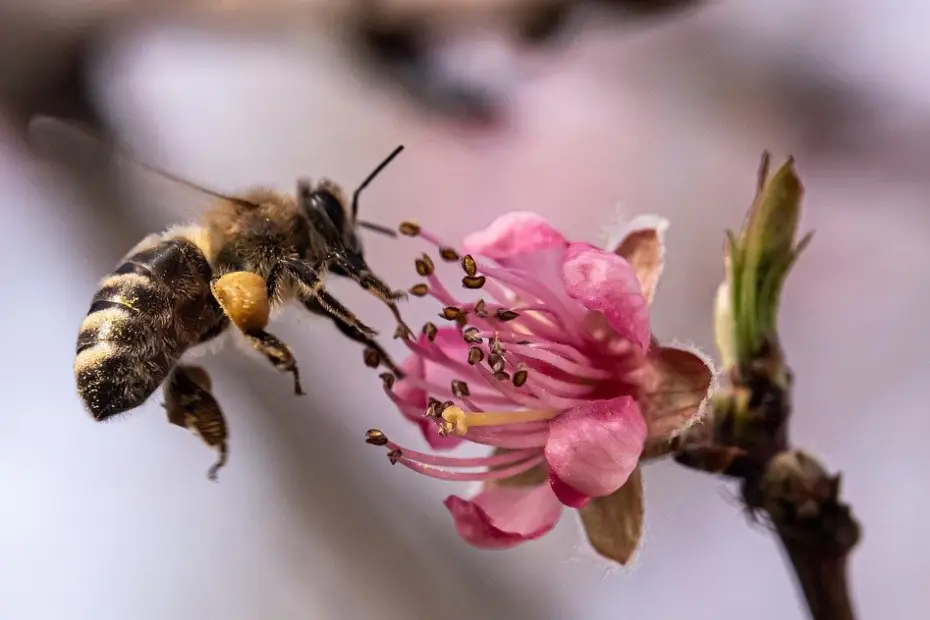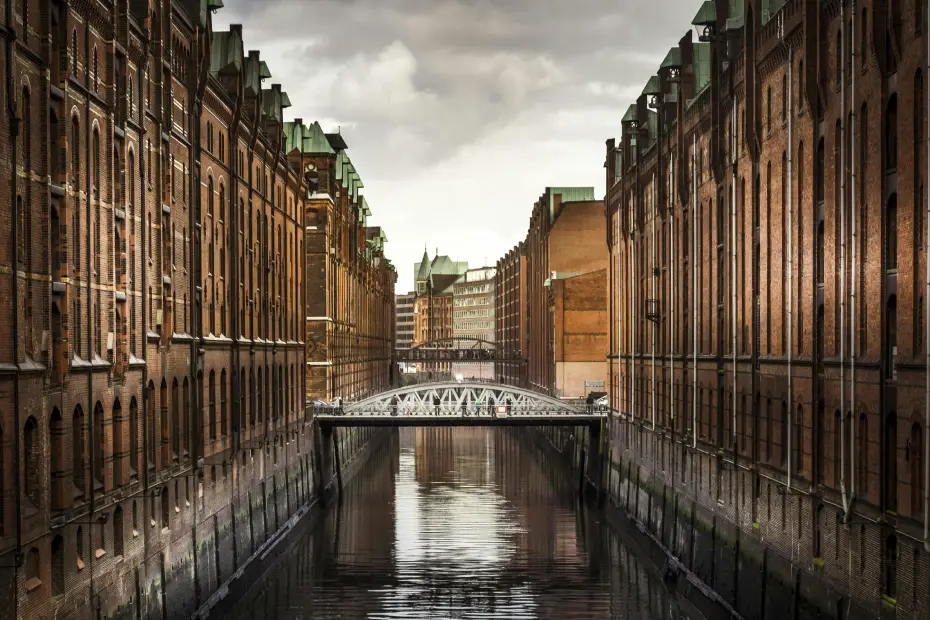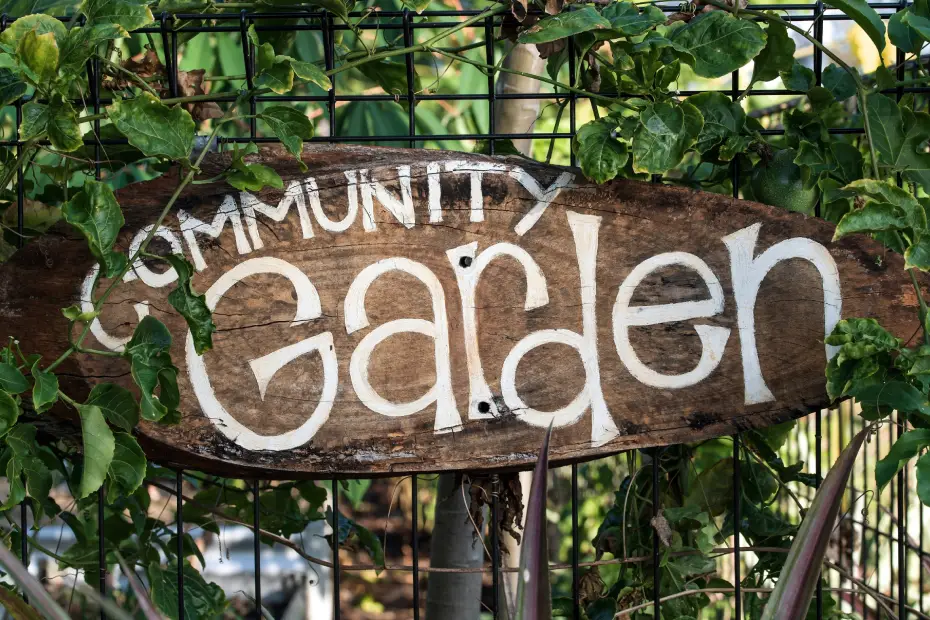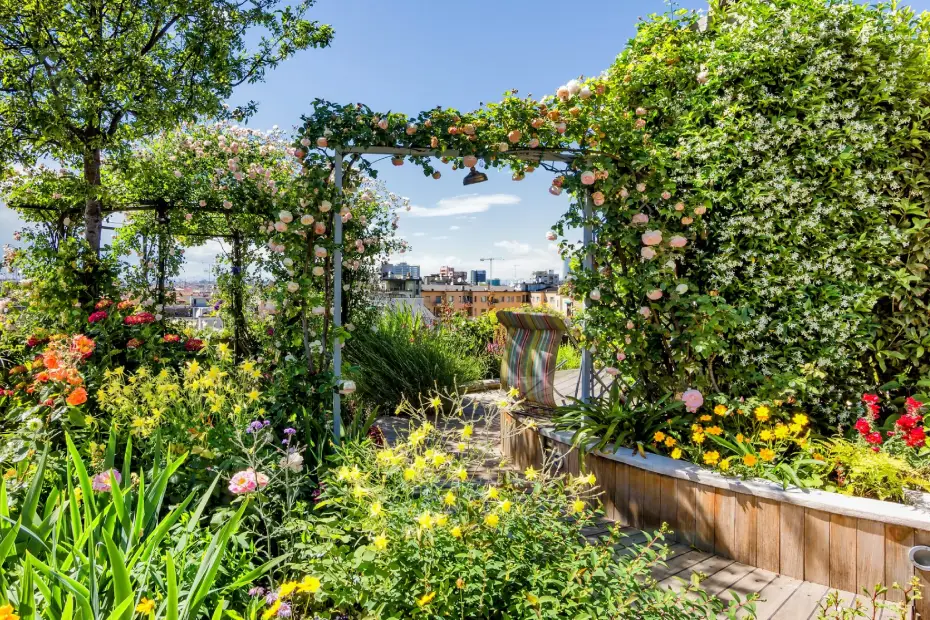Introduction
Pollinators are essential to the complex web of ecosystems that make up our world. These amazing critters, which include birds, bats, bees, butterflies, and other creatures, help in the reproduction of a vast number of plant species. From the grains that keep our civilizations going to the wildflowers that adorn our meadows, their ceaseless efforts guarantee the diversity and abundance of our flora. On the other hand, pollinator populations are severely threatened globally. Their decline is a result of a number of issues, including habitat loss, pesticide use, climate change, and others. This puts not just the health of our ecosystems at risk but also our own food security.
We will dig into the fascinating world of pollinators in this article, examining their vital function in the ecosystem, the difficulties they face in urban settings, and the pressing need to protect them. We will also highlight the need of individual action in preserving these essential creatures and offer workable solutions. Through comprehending and valuing the significant influence of pollinators, we may collaborate to create a future in which environment and humans coexist harmoniously.
Understanding Pollinators and their Role in the Ecosystem
The unsung heroes of the natural world are pollinators, who tirelessly perform a duty essential to the survival of many plant species: pollination. However, what precisely are pollinators, and how do they support our ecosystems’ fragile equilibrium?
What are pollinators?
Animals known as pollinators help pollen grains get from a flower’s male anther to its female stigma, allowing for fertilization and the subsequent development of seeds and fruits. Many blooming plants, including the great majority of our food crops, depend on this process for their reproduction.
Typical pollinators consist of:
- Bees: These hardworking insects are probably the most recognized pollinators. Bees come in more than 20,000 different kinds, and each one has a special function in pollination. Among the many different bee species that support our ecosystems are solitary bees, bumblebees, and honeybees.
- Butterflies: These vibrant insects serve as crucial pollinators in addition to being visually pleasing. They unintentionally spread pollen as they dart from flower to flower in pursuit of nectar, which promotes plant reproduction.
- Birds: A few bird species, including sunbirds and hummingbirds, are also involved in pollination. They can reach nectar deep within flowers with their long beaks and tongues, and while they eat, pollen sticks to their feathers and spreads to other blooms.
- Bats: Bats are essential pollinators in many tropical and desert habitats, despite their common association with mystery and darkness. They are especially crucial for pollinating plants that bloom at night, including cacti and agave.
A natural wonder is the pollination process itself. Grains of pollen adhere to the body of the pollinator when it visits the bloom to gather nectar or pollen. Some of these pollen grains are transferred to the stigma when the pollinator visits another flower in the same species, which starts the fertilization process. Pollinators and plants engage in a complex dance that sustains biodiversity and the survival of plant life.
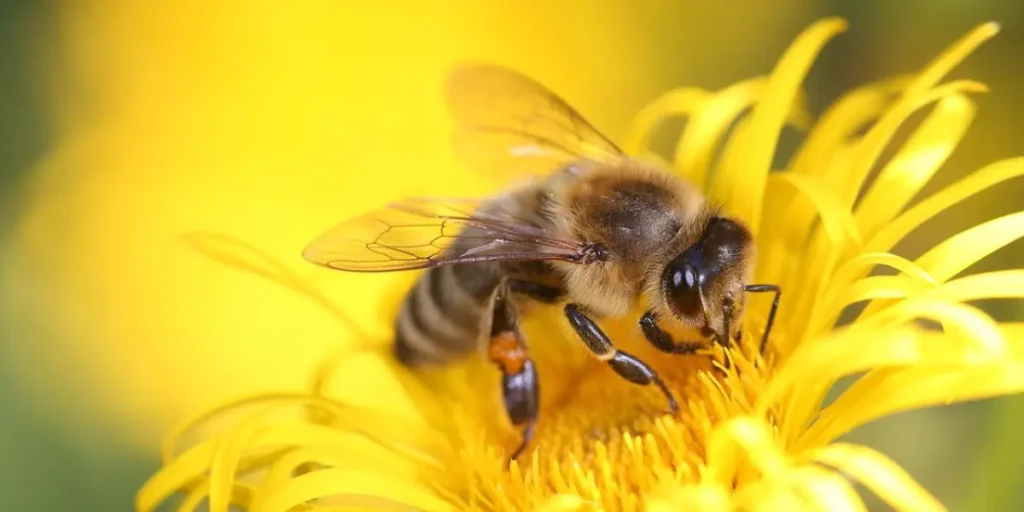
The Importance of Pollinators for Food Production
In addition to being important for the environment, pollinators are essential to our food chains. An estimated one-third of the food we eat is pollinator dependent. Numerous crops, ranging from fruits and vegetables to nuts and spices, rely on the industrious labor of these laborers.
The pollination process has enormous economic benefits. It is believed to be worth hundreds of billions of dollars every year on a global scale. The value of pollination services to agriculture is estimated to be between $18 billion and $27 billion annually in the United States alone.
Some crops that are particularly dependent on pollinators are:
- Almonds: Bees are absolutely necessary for the pollination of almond trees. California’s almond industry, which grows most of the almonds in the world, needs billions of honeybees a year to pollinate its enormous crops.
- Apples: Another crop that is highly dependent on pollinators, especially bees, is apples. Apple trees would yield very few, if any, apples without pollination.
- Blueberries: A wide range of insects, such as flies, butterflies, and bees, pollinate blueberries. Pollinator variety and abundance are directly correlated with blueberry crop quality and productivity.
- Coffee: Bees are necessary for pollinating coffee plants. The pollination process affects the flavor and quality of coffee beans.
- Cucumbers: Pollination is necessary for cucumbers to yield fruit. Cucumbers are mostly pollinated by bees, however other insects can also help.
These are only a handful of the numerous crops that require pollinators. Our food security would be in jeopardy and our diets would be far less diversified and nutrient-dense without their assistance.
The Benefits of Pollinators for the Environment
In addition to helping to produce food, pollinators have numerous positive environmental effects. They are necessary to keep ecosystems healthy and rich in biodiversity.
Pollinators support the health of ecosystems in a number of ways.
- Maintaining Plant Populations: Pollinators guarantee the survival of plant species and the genetic variety within them by aiding in plant reproduction. For ecological resilience and environmental change adaption, this is essential.
- Supporting Natural Habitats: Pollinators are essential to the reproduction of many wild plants, including those that give food and shelter to other species. The numbers of birds, mammals, and other species that depend on plants for existence may be impacted by the loss of pollinators, which can have a domino effect on entire ecosystems.
- Providing Food for Other Wildlife: Numerous creatures, including as birds, bats, and other insects, eat the pollinators themselves. Their decrease may have an effect on these predators’ populations and upset the balance of the food chain.
The interactions between pollinators and plants weave the complex web of life together. The health and vitality of our planet’s ecosystems are ensured by protecting pollinators and the innumerable other species that rely on them.
The Plight of Urban Pollinators
Pollinators encounter particular difficulties in urban settings, despite their critical role in agricultural and natural ecosystems. Although millions of humans call the concrete jungle home, these sensitive creatures may find it unfriendly. In order to effectively establish policies for the protection of urban pollinators, it is imperative to comprehend the unique challenges that they face.
Challenges Faced by Urban Pollinators
Natural habitats are being lost and fragmented as a result of urbanization, giving pollinators fewer locations to forage, nest, and procreate. Pollinators have less food and refuge when diverse plant communities are replaced with buildings, concrete, and lawns.
Pollinators are seriously threatened by the use of pesticides in urban settings, both in private gardens and public locations. Pollinators may be killed by these substances directly or their capacity to move, procreate, and fend off illness may be compromised.
Urban pollinators are impacted by climate change as well. The timing of flowering and the availability of nectar and pollen can be disrupted by rising temperatures and shifting precipitation patterns, which can have an impact on pollinator foraging and reproductive success.
Other difficulties urban pollinators encounter are as follows:
- Light pollution: Artificial light at night has the potential to confuse pollinators, upsetting their usual routines and impairing their ability to locate food and travel.
- Air pollution: Air pollution can have a deleterious effect on pollinator health, lowering longevity and reproductive performance.
- Disease: Because of the close quarters and stress of living in difficult conditions, illnesses that affect pollinators can spread more quickly in urban settings.
These difficulties, along with the pressures that come with living in an urban area, can significantly affect pollinator populations. Research has indicated that, in comparison to natural settings, pollinator diversity and abundance are frequently lower in urban areas.
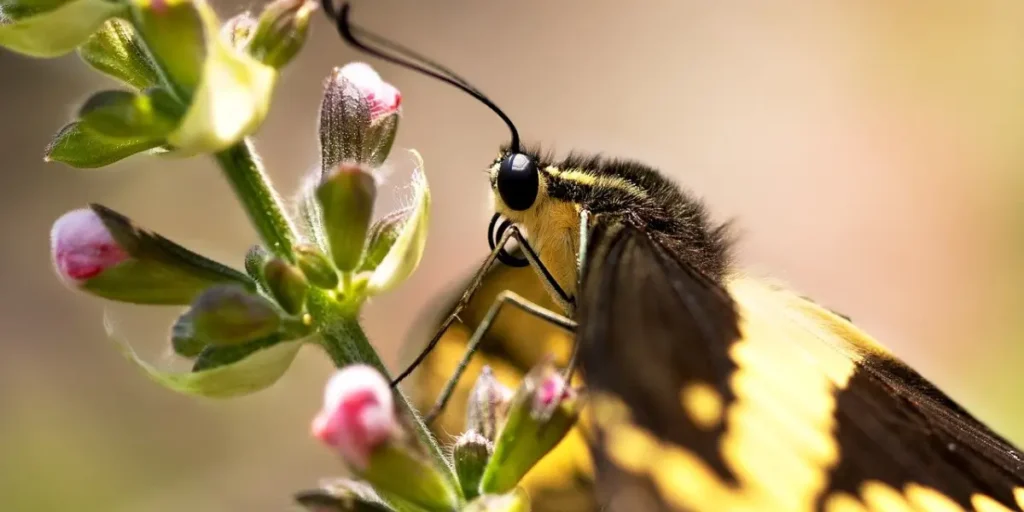
The Importance of Protecting Urban Pollinators
Even though urban pollinators suffer many difficulties, it is imperative that they are protected for a number of reasons. Urban ecosystems depend on urban pollinators in a special way to remain resilient and healthy.
By pollinating a variety of plants, such as native wildflowers, trees, and shrubs, they support urban biodiversity. This gives other creatures a place to live and food, preserving the natural balance of urban green zones.
Urban food production is also influenced by urban pollinators. Pollinators are necessary for the production of fruits, vegetables, and herbs in urban farms, rooftop gardens, and community gardens. Pollinators can contribute to sustainable food systems and increase food security in urban areas.
Beyond their advantages to the environment and the economy, urban pollinators give city people a link to the natural world. Their presence in gardens, parks, and other green areas adds to the visual appeal of urban environments and offers leisure and educational possibilities.
In addition to being socially and economically necessary, protecting urban pollinators is also environmentally vital. We are making an investment in the health and welfare of our cities and their people when we protect these important animals.
Practical Ways to Protect and Support Urban Pollinators
Although the situation of urban pollinators may appear hopeless, there are numerous doable actions that people, groups, and legislators can do to sustain and safeguard these important organisms. We have the power to significantly impact the lives of urban pollinators through providing habitats that are conducive to bees, minimizing the use of pesticides, and funding conservation initiatives.
Creating Pollinator-Friendly Habitats
Establishing habitats that are favorable to pollinators in our gardens, parks, and other green areas is one of the best methods to promote urban pollinators. This entails planting a wide variety of native plants that yield pollen and nectar all summer long.
Here are some pointers for making environments that are beneficial to pollinators:
- Plant native plants: Native plants offer the best food and habitat for native pollinators since they are acclimated to the local climate and soil conditions. Do some research on local native plants and select a range of species with varying blooming seasons.
- Choose a diverse selection of plants: The sizes, hues, and forms of flowers appeal to different pollinators. You may draw in a greater variety of pollinators to your garden by planting a variety of plants.
- Provide continuous bloom: Make sure your garden is consistently flowering during the growing season. Pollinators will have a reliable source of food thanks to this.
- Avoid pesticides: Pesticides can damage pollinators, including ones that are designated as “bee-friendly.” Choose sustainable gardening methods that utilize as little chemicals as possible, such as organic gardening.
- Provide nesting sites: Certain nesting locations are necessary for a number of pollinators, including butterflies and bees. These can be supplied by building brush piles, erecting bee houses, or leaving patches of bare earth.
- Create water sources: Clean water is a must for pollinators. This can be supplied by setting up small water dishes in your garden that are filled with rocks or marbles.
Your outdoor space can become a pollinator refuge by including these principles into your gardening and landscaping endeavors.
Reducing Pesticide Use
Although pesticides work well to manage pests, they can have disastrous impacts on pollinators. Even insecticides marketed as “bee-friendly” can harm pollinators if used incorrectly, as many of them are poisonous to bees and other beneficial insects.
The usage of pesticides in urban areas must be decreased in order to safeguard pollinators. Here are some pointers:
- Identify and monitor pests: Before reaching for pesticides, try to identify the pest and monitor its population. Often, natural predators or cultural practices can effectively control pests without the need for chemicals.
- Use alternative pest control methods: There are many alternative pest control methods that are less harmful to pollinators. These include handpicking pests, using barriers or traps, and introducing beneficial insects.
- Choose pesticides carefully: If pesticides are necessary, choose those that are least toxic to pollinators and apply them according to the label instructions. Avoid spraying pesticides when pollinators are active, such as during the day when bees are foraging.
- Support organic and sustainable gardening practices: Organic and sustainable gardening practices prioritize the health of the soil and the ecosystem, minimizing the use of synthetic pesticides and fertilizers. By supporting these practices, you can help to create a more pollinator-friendly environment.
By reducing pesticide use, we can create safer and healthier environments for pollinators and other beneficial insects.
Supporting Pollinator Conservation Efforts
Beyond individual actions, there are many ways to support broader pollinator conservation efforts.
Here are some ways to get involved:
- Donate to organizations working to protect pollinators: Pollinator conservation is the focus of numerous organizations. Donations like yours can support initiatives for habitat restoration, education, and research.
- Volunteer your time: Volunteer options abound, including planting pollinator gardens, keeping an eye on pollinator populations, and educating the public about the need of pollinator protection.
- Spread awareness: Inform your friends, family, and neighbors about the value of pollinators and the difficulties they encounter. Additionally, you can promote laws that aid in the preservation of pollinators.
- Support businesses that prioritize pollinator health: Opt to buy goods from companies who respect pollinator health and employ sustainable business methods.
By supporting pollinator conservation efforts, you can contribute to the protection and restoration of pollinator populations on a larger scale.
The Power of Individual Action
Even though working together is essential to solving the intricate problems pollinators face, individual acts can still make a big difference. No matter how insignificant our efforts may appear, each of us can make a difference in the preservation of pollinators in our own special way.
Small Steps, Big Impact
Pollinators can have an impact on our life through even the slightest of activities. Our daily lives and communities can be made more pollinator-friendly by implementing little adjustments.
Here are a few simple actions you can do to help pollinators:
- Plant a pollinator garden: Bees, butterflies, and other pollinators can benefit greatly from the food and habitat that even a tiny patch of plants that are beneficial to pollinators can offer.
- Reduce pesticide use: Avoid using pesticides in your garden and opt for natural pest control methods instead.
- Provide water sources: Provide pollinators a place to drink in your garden by setting up small bowls of water with rocks or marbles in them.
- Leave some areas of your lawn unbowed: This will enable the growth of other plants, such as wildflowers, giving pollinators food and a place to live.
- Support local beekeepers: Buy honey and other items from beekeepers in your area to help them sustain a healthy population of bees.
- Educate others: Share information about the importance of pollinators and the ways to protect them with your friends, family, and community.
These are just a few examples of the many ways you can support pollinators. By taking action in your own life, you can inspire others to do the same, creating a ripple effect of positive change.
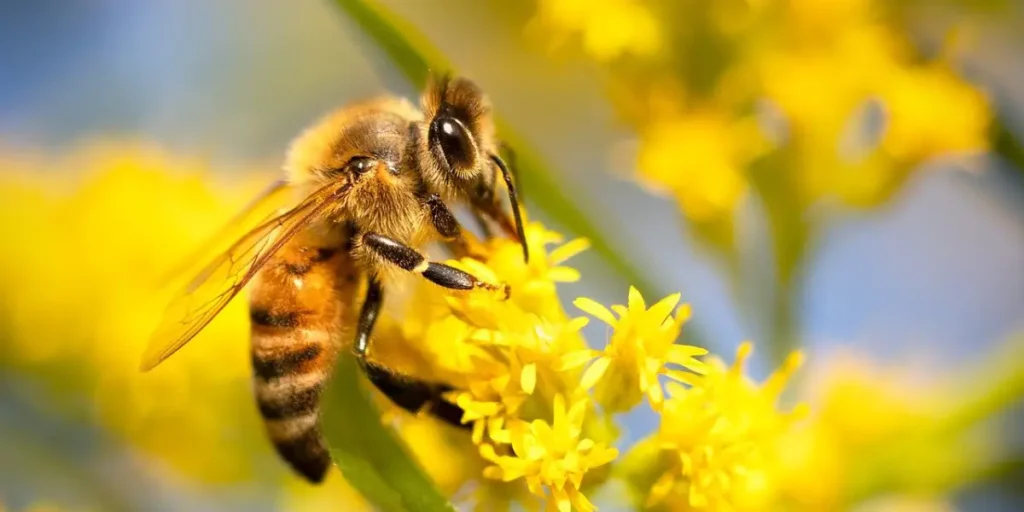
Conclusion
One can never overestimate the importance of pollinators. These amazing animals are essential to our food chains, ecosystems, and general well-being. It is not only socially and economically necessary, but also environmentally important to protect bees, butterflies, and other urban pollinators.
In order to secure a future in which nature and humans coexist peacefully, we must recognize the difficulties faced by pollinators and take action to safeguard them. Never forget that every deed, no matter how tiny, matters. By working together, we can protect the delicate balance of our planet and improve the lives of these essential creatures.
Let’s celebrate the role that pollinators play in our ecosystem and endeavor to create a place where their fluttering and buzzing wings serve as a constant reminder of how intertwined all life is.
